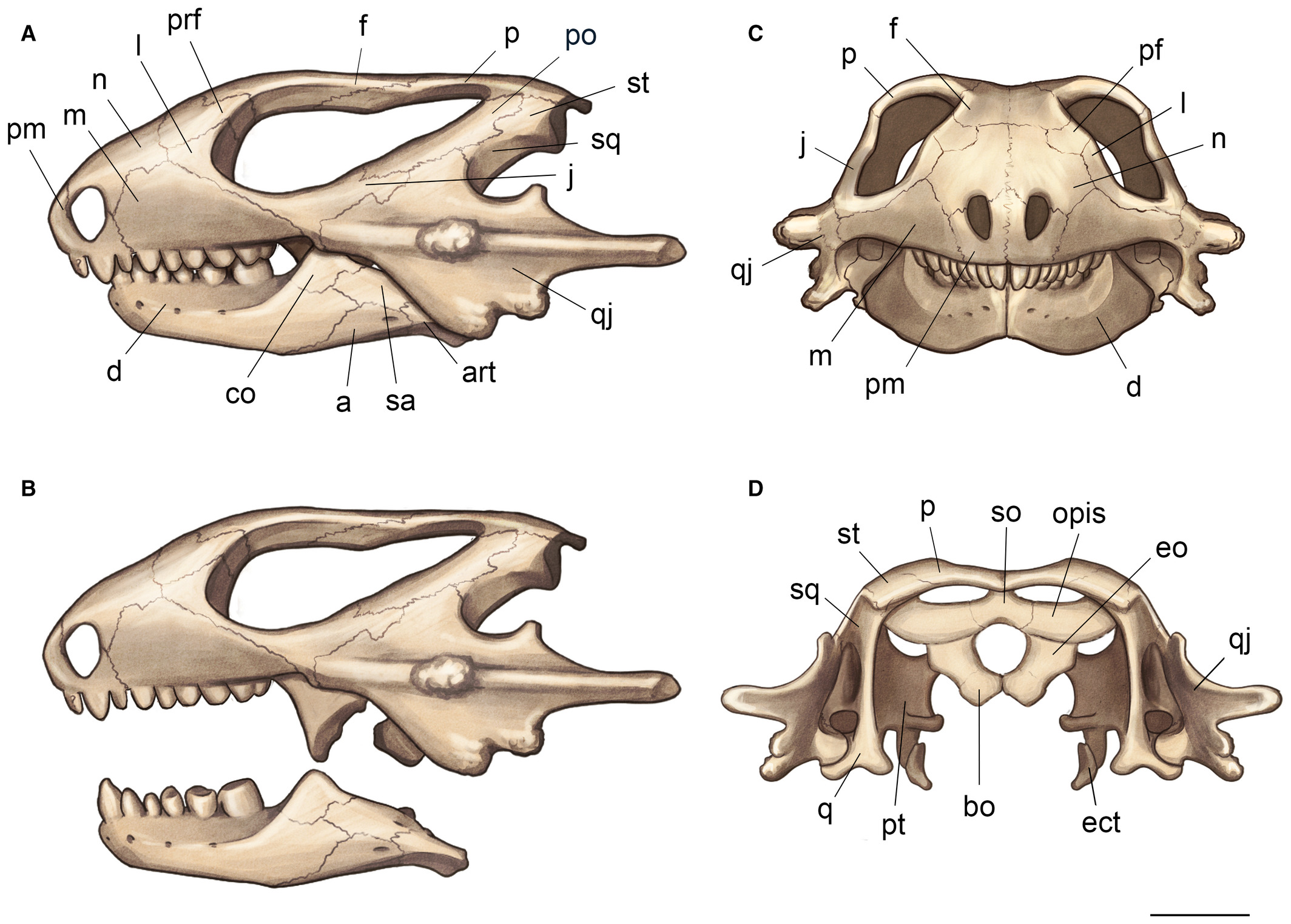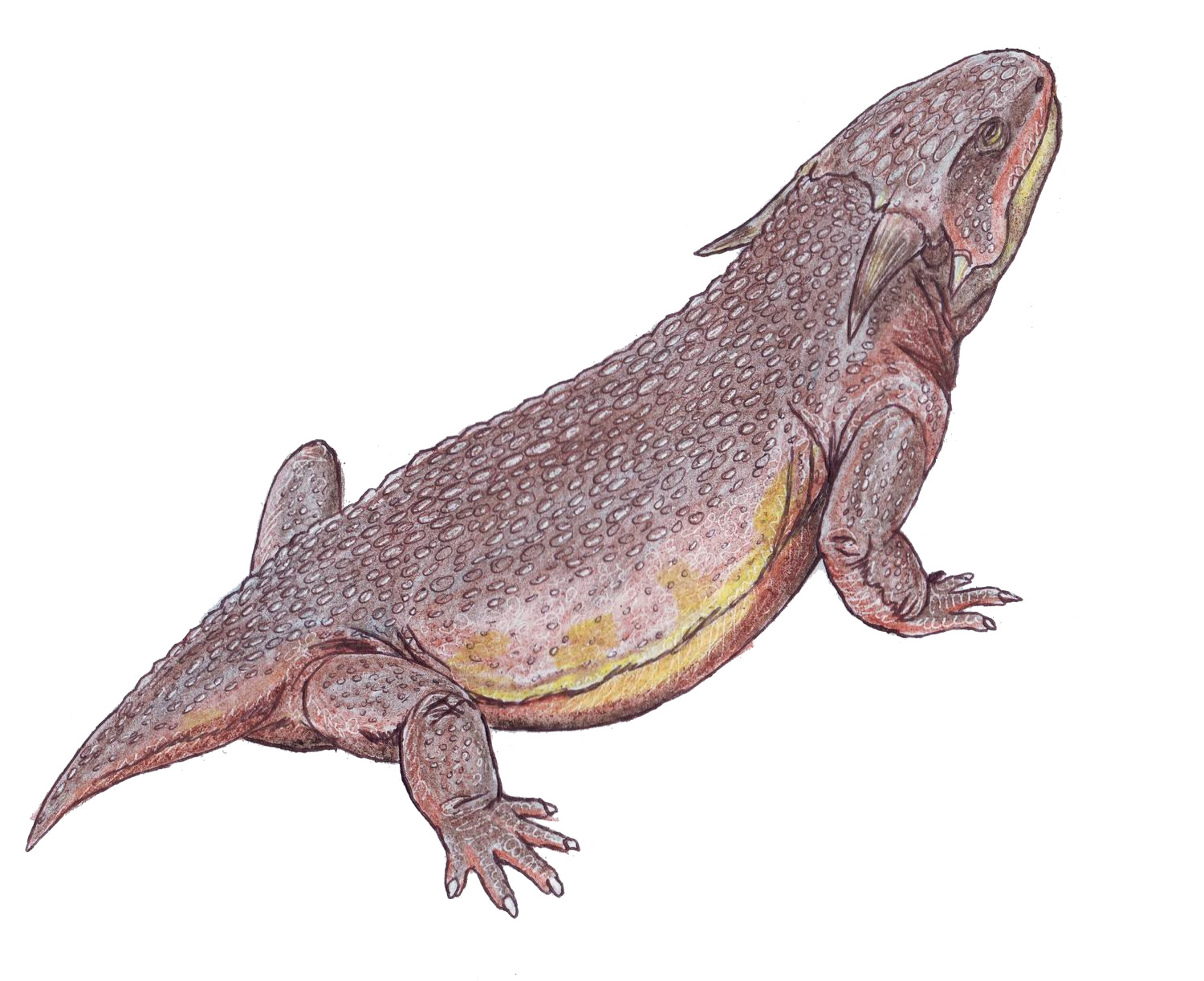|
Leptopleuronini
Leptopleuroninae is an extinct subfamily of procolophonid Procolophonidae is an extinct family of small, lizard-like parareptiles known from the Late Permian to Late Triassic that were distributed across Pangaea, having been reported from Europe, North America, China, South Africa, South America, Antarc ... reptiles. References Leptopleuronines Triassic parareptiles Early Triassic first appearances Late Triassic extinctions {{paleo-reptile-stub ... [...More Info...] [...Related Items...] OR: [Wikipedia] [Google] [Baidu] |
Early Triassic
The Early Triassic is the first of three epochs of the Triassic Period of the geologic timescale. It spans the time between Ma and Ma (million years ago). Rocks from this epoch are collectively known as the Lower Triassic Series, which is a unit in chronostratigraphy. The Early Triassic is the oldest epoch of the Mesozoic Era. It is preceded by the Lopingian Epoch (late Permian, Paleozoic Era) and followed by the Middle Triassic Epoch. The Early Triassic is divided into the Induan and Olenekian ages. The Induan is subdivided into the Griesbachian and Dienerian subages and the Olenekian is subdivided into the Smithian and Spathian subages. The Lower Triassic series is coeval with the Scythian Stage, which is today not included in the official timescales but can be found in older literature. In Europe, most of the Lower Triassic is composed of Buntsandstein, a lithostratigraphic unit of continental red beds. The Early Triassic and partly also the Middle Triassic s ... [...More Info...] [...Related Items...] OR: [Wikipedia] [Google] [Baidu] |
Soturnia
''Soturnia'' is an extinct genus of procolophonid parareptile. It is known from rocks of the Late Triassic-age Caturrita Formation of the municipality of Faxinal do Soturno in the geopark of Paleorrota, Brazil. ''Soturnia'' was named in 2003 by Cisneros and Schultz; the type species is ''S. caliodon''. It was a leptopleuroninae procolophonid.Cisneros, J.C.; and Schultz, C.L. (2003). "''Soturnia caliodon'' n. g. n. sp., a procolophonid reptile from the upper Triassic of Southern Brazil". ''Neues Jahrbuch für Geologie und Paläontologie, Abhandlungen'' 227(3):365–380. References External links ''Soturnia''in the Paleobiology Database The Paleobiology Database is an online resource for information on the distribution and classification of fossil animals, plants, and microorganisms. History The Paleobiology Database (PBDB) originated in the NCEAS-funded Phanerozoic Marine Pale ... Leptopleuronines Triassic parareptiles Late Triassic reptiles of South America Tr ... [...More Info...] [...Related Items...] OR: [Wikipedia] [Google] [Baidu] |
Triassic Parareptiles
The Triassic ( ) is a geologic period and system which spans 50.6 million years from the end of the Permian Period 251.902 million years ago ( Mya), to the beginning of the Jurassic Period 201.36 Mya. The Triassic is the first and shortest period of the Mesozoic Era. Both the start and end of the period are marked by major extinction events. The Triassic Period is subdivided into three epochs: Early Triassic, Middle Triassic and Late Triassic. The Triassic began in the wake of the Permian–Triassic extinction event, which left the Earth's biosphere impoverished; it was well into the middle of the Triassic before life recovered its former diversity. Three categories of organisms can be distinguished in the Triassic record: survivors from the extinction event, new groups that flourished briefly, and other new groups that went on to dominate the Mesozoic Era. Reptiles, especially archosaurs, were the chief terrestrial vertebrates during this time. A specialized subgroup of archo ... [...More Info...] [...Related Items...] OR: [Wikipedia] [Google] [Baidu] |
Leptopleuronines
Leptopleuroninae is an extinct subfamily of procolophonid Procolophonidae is an extinct family of small, lizard-like parareptiles known from the Late Permian to Late Triassic that were distributed across Pangaea, having been reported from Europe, North America, China, South Africa, South America, Antarc ... reptiles. References Leptopleuronines Triassic parareptiles Early Triassic first appearances Late Triassic extinctions {{paleo-reptile-stub ... [...More Info...] [...Related Items...] OR: [Wikipedia] [Google] [Baidu] |
Procolophonid
Procolophonidae is an extinct family of small, lizard-like parareptiles known from the Late Permian to Late Triassic that were distributed across Pangaea, having been reported from Europe, North America, China, South Africa, South America, Antarctica and Australia. The most primitive procolophonids were likely insectiovous or omnivorous, more derived members of the clade developed bicusped molars, and were likely herbivorous feeding on high fiber vegetation or durophagous omnivores. Many members of the group are noted for spines projecting from the quadratojugal bone of the skull, which likely served a defensive purpose as well as possibly also for display. At least some taxa were likely fossorial burrowers. While diverse during the Early and Middle Triassic, they had very low diversity during the Late Triassic, and were extinct by the beginning of the Jurassic. Phylogeny Below is a cladogram A cladogram (from Greek ''clados'' "branch" and ''gramma'' "character") is a diagr ... [...More Info...] [...Related Items...] OR: [Wikipedia] [Google] [Baidu] |
Subfamily (biology)
In biological classification, a subfamily (Latin: ', plural ') is an auxiliary (intermediate) taxonomic rank, next below family but more inclusive than genus. Standard nomenclature rules end subfamily botanical names with "-oideae", and zoological names with "-inae". See also * International Code of Nomenclature for algae, fungi, and plants * International Code of Zoological Nomenclature The International Code of Zoological Nomenclature (ICZN) is a widely accepted convention in zoology that rules the formal scientific naming of organisms treated as animals. It is also informally known as the ICZN Code, for its publisher, the I ... * Rank (botany) * Rank (zoology) Sources {{biology-stub ... [...More Info...] [...Related Items...] OR: [Wikipedia] [Google] [Baidu] |
Scoloparia
''Scoloparia'' is an extinct genus of procolophonid parareptile from the Triassic of Canada. Fossils have been found in the Early Triassic to Norian-age Wolfville Formation in Nova Scotia, Canada Canada is a country in North America. Its ten provinces and three territories extend from the Atlantic Ocean to the Pacific Ocean and northward into the Arctic Ocean, covering over , making it the world's second-largest country by tot .... Like many Triassic procolophonids, ''Scoloparia'' has expanded molar-like teeth that indicate that the animal was likely herbivorous. References Leptopleuronines Triassic parareptiles Fossils of Canada Paleontology in Nova Scotia Prehistoric reptile genera {{triassic-reptile-stub ... [...More Info...] [...Related Items...] OR: [Wikipedia] [Google] [Baidu] |
Sclerosaurus
''Sclerosaurus'' is an extinct genus of procolophonid parareptile known from the Early to Middle Triassic of Germany and Switzerland. It contains a single species, ''Sclerosaurus armatus''. It was fairly small about 30 cm long, distinguished from other known parareptiles by the possession of long, backwardly projecting spikes, rear lower jaw teeth with slightly imbricating crowns, and a narrow band of back armor comprising two or three rows of sculptured osteoderms on either side of the midline. Traditional classifications, e.g. Carroll (1988) placed ''Sclerosaurus'' with the procolophonids, however some phylogenetic studies have found it to be a close relative of the pareiasaurs, and together with that group it forms the clade Pareiasauroidea.Jalil, N. E., & Janvier, P. (2005). Les pareiasaures (Amniota, Parareptilia) du Permien supérieur du Bassin d’Argana, Maroc. Geodiversitas, 27(1), 35-132. More recent phylogenetic analyses place ''Sclerosaurus'' within Procolop ... [...More Info...] [...Related Items...] OR: [Wikipedia] [Google] [Baidu] |
Libognathus
''Libognathus'' (meaning "southwest jaw" in Greek) is an extinct genus of procolophonid parareptile from the Late Triassic of Texas. The type and only species, ''Libognathus sheddi'', was named in 1997 from the Cooper Canyon Formation in the fossil-rich Post Quarry, which is found in Garza County. ''Libognathus'' was the first definite procolophonid discovered in the southwestern United States, although another possible procolophonid called '' Chinleogomphius'' was reported from the southwest before ''Libognathus'' was named. Description ''Libognathus'' is known from a single holotype specimen including the left dentary bone and coronoid process of the lower jaw, as well as six teeth implanted in the jaw. ''Libognathus'' can be identified as a procolophonid by its wide molar-like teeth, each of which has a ridge running along its width and several projections or cusps around it. It is considered a member of the procolophonid subfamily Leptopleuroninae based on the presence of m ... [...More Info...] [...Related Items...] OR: [Wikipedia] [Google] [Baidu] |
Late Triassic
The Late Triassic is the third and final epoch of the Triassic Period in the geologic time scale, spanning the time between Ma and Ma (million years ago). It is preceded by the Middle Triassic Epoch and followed by the Early Jurassic Epoch. The corresponding series of rock beds is known as the Upper Triassic. The Late Triassic is divided into the Carnian, Norian and Rhaetian Ages. Many of the first dinosaurs evolved during the Late Triassic, including ''Plateosaurus'', ''Coelophysis'', and '' Eoraptor''. The Triassic–Jurassic extinction event began during this epoch and is one of the five major mass extinction events of the Earth. Etymology The Triassic was named in 1834 by Friedrich von Alberti, after a succession of three distinct rock layers (Greek meaning 'triad') that are widespread in southern Germany: the lower Buntsandstein (colourful sandstone'')'', the middle Muschelkalk (shell-bearing limestone) and the upper Keuper (coloured clay). The Late Triassic Ser ... [...More Info...] [...Related Items...] OR: [Wikipedia] [Google] [Baidu] |
Leptopleuron
''Leptopleuron'' is an extinct genus of procolophonid that lived in the dry lands during the late Triassic in Elgin of northern Scotland and was the first to be included in the clade of Procolophonidae. First described by English paleontologist and biologist Sir Richard Owen, ''Leptopleuron'' is derived from two Greek bases, ''leptos'' for "slender" and ''pleuron'' for "rib," describing it as having slender ribs. The fossil is also known by a second name, ''Telerpeton'', which is derived from the Greek bases ''tele'' for "far off" and ''herpeton'' for "reptile." In Scotland, ''Leptopleuron'' was found specifically in the Lossiemouth Sandstone Formation. The yellow sandstone it was located in was poorly lithified with wind coming from the southwest. The environment is also described to consist of barchan dunes due to the winds, ranging up to 20 m tall that spread during dry phases into flood plains. Procolophonoids such as ''Leptopleuron'' were considered an essential addition to ... [...More Info...] [...Related Items...] OR: [Wikipedia] [Google] [Baidu] |



